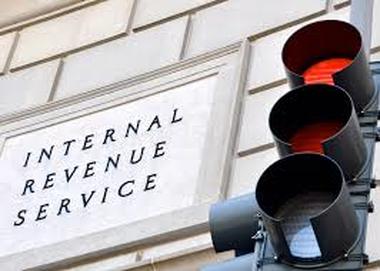This post has not been updated to reflect changes made by the Tax Cut and Jobs Act effective January 1, 2018.
Our U.S. federal income tax laws include a number of legal strategies available to many of us that permit taxpayers to reduce income tax liability. Adopting one or more of these tax strategies now will likely result in lower taxes next year at tax filing time. Most strategies need to be planned and executed well in advance and work best when used in combination. This listing below is meant to highlight a few planning possibilities but is not intended to be a complete discussion of all of the options. Keep in mind that the effectiveness of these tax strategies varies for a wide range of reasons and so the suitability of each must be considered and tested for each individual situation.
- For empty nesters… it pays to downsize the home. Married couples can exclude up to $500,000 ($250,000 for single people) of gain on the sale of a home. That means possibly a half million dollars completely free of income tax. No other provision of the federal tax law is as generous. Considering the long-term appreciation of housing in most areas, now may be the time to consider cashing in and trading for a less expensive dwelling. There is no need to reinvest the gain in another house, so this strategy is perfect for empty-nesters who may be ready to downsize. See what the IRS has to say on this topic.

- For self-employed individuals… Stretch tax-advantaged retirement plan deductions. Self-employed individuals can deduct up to 100% of current taxable income sometimes up to $260,000 for contributions to a private pension plan. Individuals who are close to retirement age, are self-employed, have income over $150,000 and work in a small business without many employees typically have the greatest opportunity to shelter earnings from taxes using this strategy. See this new article about setting up your own pension plan. Plan documents must be on place in the year that the deduction is to be taken but the investment may be made in the following year prior to tax return filing. Self-employed individuals at incomes less than that amount are more likely to benefit from a Simplified Employee Pension, Health Savings Account and other similar options. Any of these options can be started quickly and at minimal cost.
- For small businesses… Immediately deduct up to $500,000 for the cost of certain types of capital assets purchased rather than deduct the cost over time as is normally required. This break was formerly nicknamed the “Range Rover write-off” when it was first introduced but now generally applies to purchases other than autos. Most autos are now subject to special tax write off restrictions. Heavier work trucks are allowed the full write off. The tax benefit is magnified when you finance a purchase and have not actually yet made cash payments. The IRS rules are commonly discussed under the term “Section 179“.
- For employees… Receive tax-free reimbursement of out-of-pocket health care expenses under more liberal rules for 2017. Use a Health Savings Account (HSA) if you are self-employed or use a Health Reimbursement Arrangement (HRA) for an employee. HRAs must use only employer-paid funds and are generally used in the same tax year but HSAs may allow employee contributions and build up to cover future expenses. Read more about the new 2017 HRAs here.
- For lower-income wage earners… Most long-term capital gains are completely tax-free for taxpayers below the 15% tax bracket threshold. For 2017 this means married taxpayers up to $75,900 income and singles up to $37,950. (Even for taxpayers with much higher income up to $470,700, the long term capital gain tax rate is only 15% so generation of long term capital gains are almost always a desired tax strategy). Also, a separate tax credit is available for low-income individuals who make retirement plan contributions. The federal government effectively matches 50% of your deposit with a tax credit. Of course, the problem is that low-income people do not have money to make retirement plan contributions. But parents could make a gift of IRA deposits to their children, for example, to effectively earn an immediate 50% return on their investment. Combining these strategies is even more effective: selling a capital gain asset tax-free and putting the proceeds into a tax-deductible retirement contribution and then getting an additional matching tax credit is an amazingly effective tax strategy. The problem, of course, is that most low-income people do not have room in their budget for these types of transactions.
- For investors… eliminate taxable dividends and short term capital gains whenever possible though more tax-efficient investment choices. Mutual funds held outside of a retirement plan are generally not tax-efficient for most investors. Exchange-traded funds eliminate all of the unrealized and likely unwanted taxable distributions and put tax control in the hands of the investor. In most cases the tax-efficient investment goal is to produce long term capital gains.
- Use a deferred compensation plan. Despite recent tightening of rules for stock options and deferred compensation plans using corporate-owned life insurance, it is still easy to defer income using an employee benefit plan in other ways. Deferred compensation plans may become increasingly popular under tax reform proposed for 2017 that lower the rate of business income tax below the top individual tax rate.
- Take advantage of cash value life Insurance. Life insurance remains as the best all-around tax shelter that is available to every taxpayer regardless of income. All investment gains can be borrowed from the policy tax free and the death benefits are also tax free to your named beneficiary. No other financial vehicles offer this generous tax treatment. If tax shelter is the goal then it is important to pay the maximum premium allowed into your policy to maximize the tax benefits (paying the minimum required premium is a dangerous financial strategy even aside from tax planning). US taxpayers should use a domestic life insurance company since the IRS is now cracking down on insurance used to move assets outside the country.
- Take advantage of non-cash tax deduction for real estate depreciation. If you have rental properties, you may write off part of the purchase price and fix-up costs up to $25,000 per year even if most of the purchase price was borrowed. A taxpayer may deduct up to $25,000 in rental real estate losses as long as the taxpayer actively participates and Modified Adjusted Gross Income is less than $100,000. However, once Modified Adjusted Gross Income exceeds $150,000, this tax shelter is no longer available.
- Use a private nonprofit foundation. Nonprofit entities remain the #1 most effective tool to avoid income taxes for those whose mission meets statutory requirements. Affluent individuals make use of the tax-free status of privately managed charitable organizations for a wide range of wealth management goals.
The best tax strategy for your unique situation might not be included on this list but typically can be developed through a tax planning discussion either in person or by telephone. Please call to schedule a time to discuss tax planning ideas. 
Before committing to any tax strategy, be sure to consider a pro forma tax return (future hypothetical tax return) to test the strategies for your unique situation and pay special attention to income based phase-outs and the effects of the alternate minimum tax.
The first step in any successful tax planning effort is to prepare a hypothetical future tax return and then test various “what if” strategies for plans in combination. Future tax results are based partly on your past tax history so it is also important to review recently filed returns before planning to new strategies.
Finally, consider that there are a range of more complex tax shelter possibilities for taxpayers who have exhausted these “easy” tax shelters. These strategies are more expensive and risky. It makes sense to consider the simple, easy and inexpensive options first. Be prepared to invest a significant amount into the financial planning advice that is prudent for more complex tax shelters. Avoid tax shelter sales schemes and deals marketed online and through skilled sales professionals that sound too good to be true.
Related resources
Tax and financial planning data organizer
[contact-form-7 id=”4556″ title=”Boilerplate Contact”]


Leave a Reply